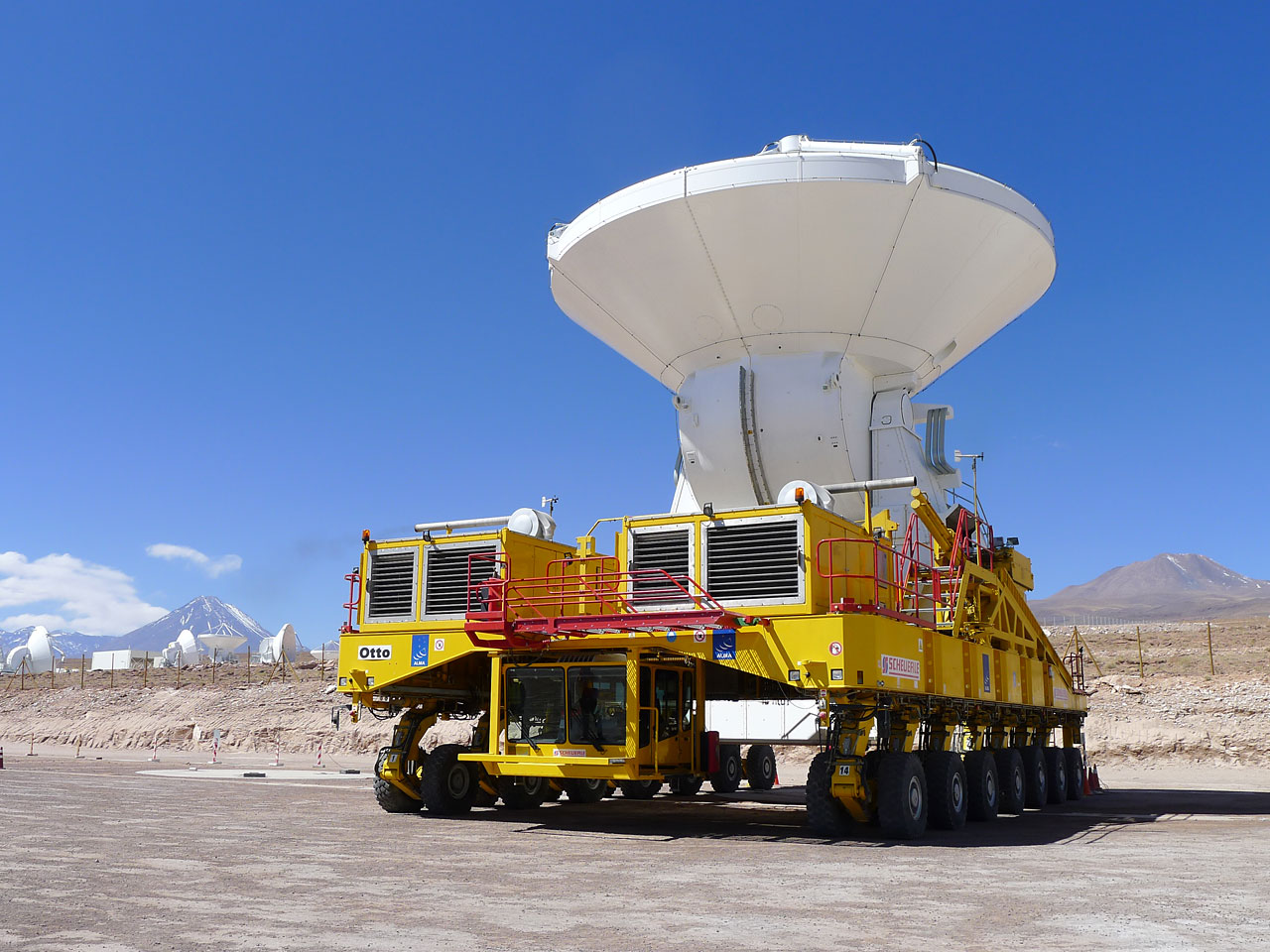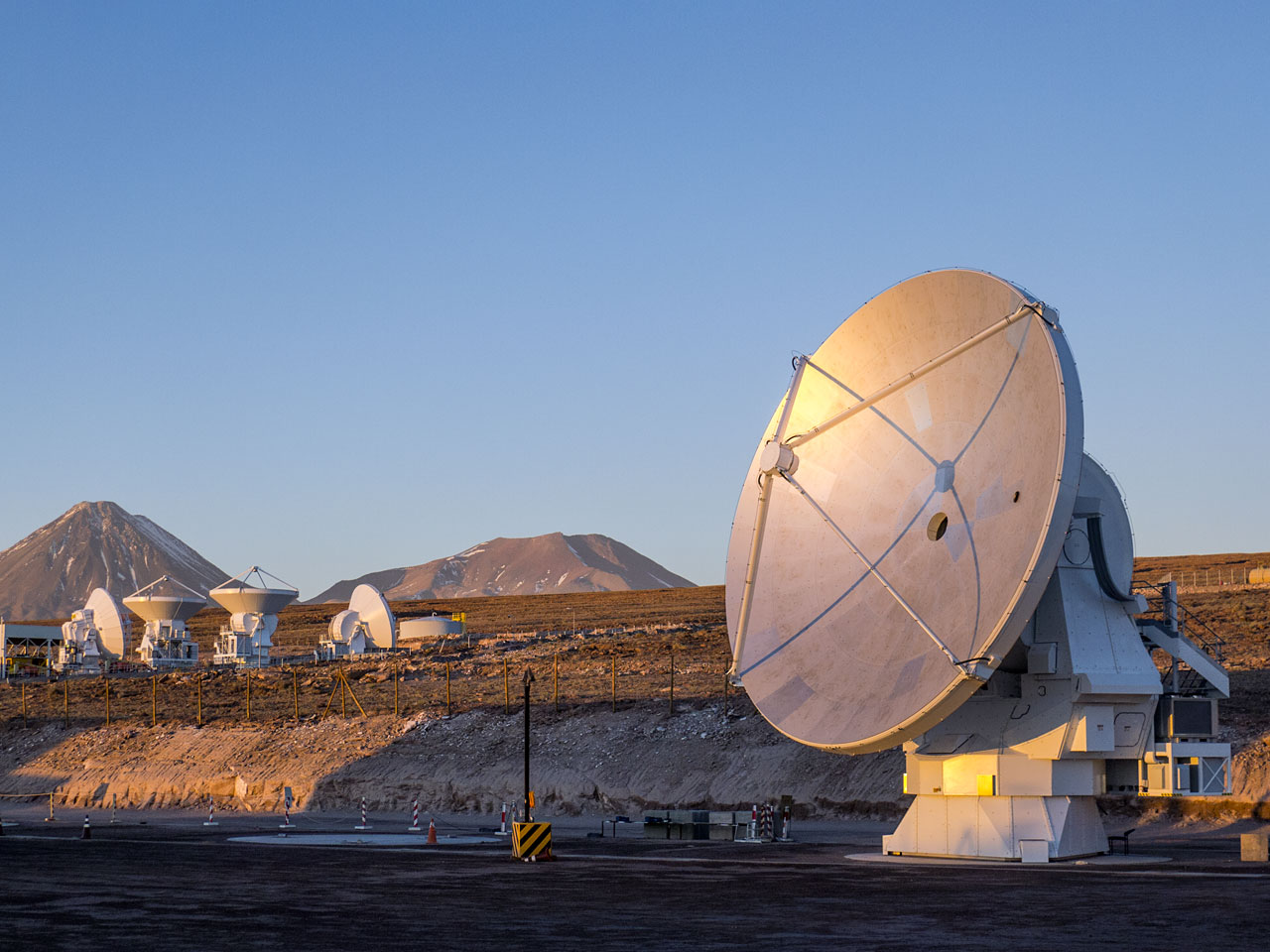Giant Radio Telescope Reaches Full Power with 66 Antennas

A giant radio telescope in Chile has received the last piece of its 66-antenna array, a special delivery that will help the observatory peer into deep space better than ever.
The antenna was delivered Monday (Sept. 30) to the Atacama Large Millimeter/submillimeter Array (ALMA), and is expected to be installed by the end of the year. ALMA has been in operation for years, adding antennas as it goes. With this last antenna one — No. 66 of the dozens provided by Europe, North America and Asia — the telescope will reach its maximum sensitivity. You can see a video of ALMA's last radio antenna delivery here.
"This is an important milestone in a project that has already expanded our understanding of the universe," Phil Jewell, the North American ALMA project director, said in a statement. "Since the delivery of the first antenna in 2009, ALMA has enabled unprecedented research and made startling discoveries. The international scientific community eagerly awaits the new capabilities ALMA will provide now that it is reaching its full potential."
The giant ALMA radio telescope officially opened for business in March, when all major systems were put online and the heaviest phase of construction finished. When complete, the radio telescope array will stretch across nearly 10 miles (16 kilometers) of Chile's Atacama Desert.
The $1.3 billion ALMA telescope is an international project managed jointly by the European Southern Observatory, the National Radio Astronomy Observatory and the National Astronomical Observatory of Japan and is by far the largest instrument capable of making observations in the submillimeter wavelength. Submillimeter astronomy uses wavelengths that are longer than radio waves, but shorter than visible light. It allows astronomers to peer through dust to see stars and planets being born, among other phenomena.
ALMA's huge antennas pick up sky signals individually. A supercomputer then combines their observations and calculates the signals' direction, similar to how humans use their two ears to pinpoint the location of the sound.
ALMA has already made many astronomical discoveries despite its uncompleted state. These include spotting a monster baby star that is still growing, taking a closer look at old star-forming galaxies, and spying on a previously unseen stage of planet birth.
Get the world’s most fascinating discoveries delivered straight to your inbox.
Follow Elizabeth Howell @howellspace, or SPACE.com @Spacedotcom. We're also on Facebook and Google+. Original article on SPACE.com.
Editor's Note: This story was updated on Oct. 4 at 10:07 a.m. EDT (1407 GMT) to reflect a correction. ALMA is an international project jointly managed by NRAO, ESO and NAOJ not just ESO as the article previously stated.

Elizabeth Howell was staff reporter at Space.com between 2022 and 2024 and a regular contributor to Live Science and Space.com between 2012 and 2022. Elizabeth's reporting includes multiple exclusives with the White House, speaking several times with the International Space Station, witnessing five human spaceflight launches on two continents, flying parabolic, working inside a spacesuit, and participating in a simulated Mars mission. Her latest book, "Why Am I Taller?" (ECW Press, 2022) is co-written with astronaut Dave Williams.




